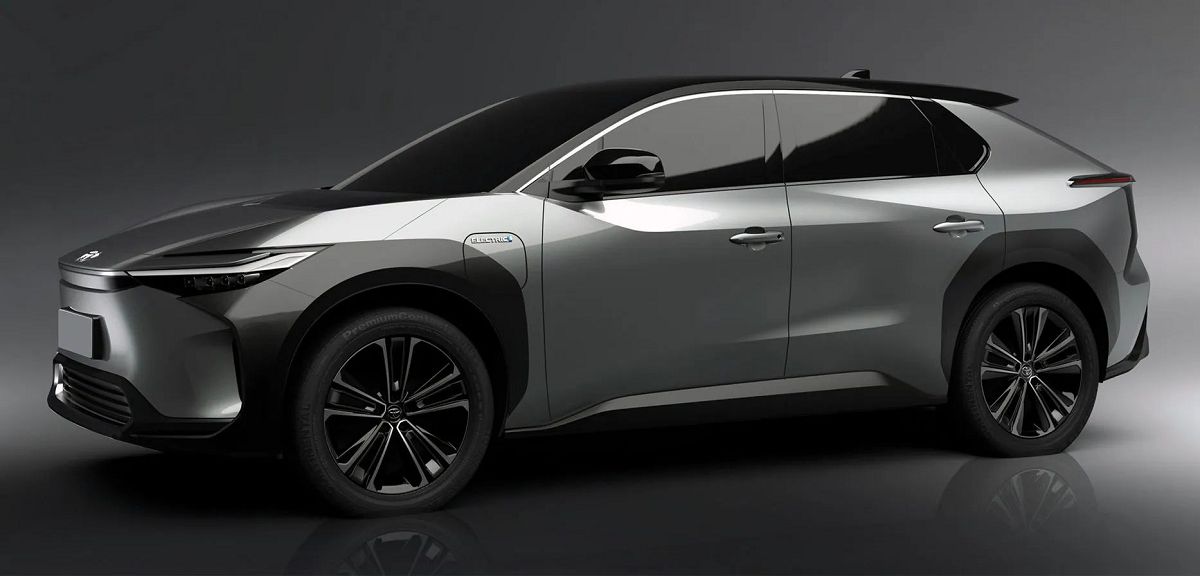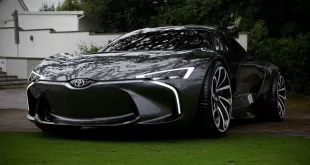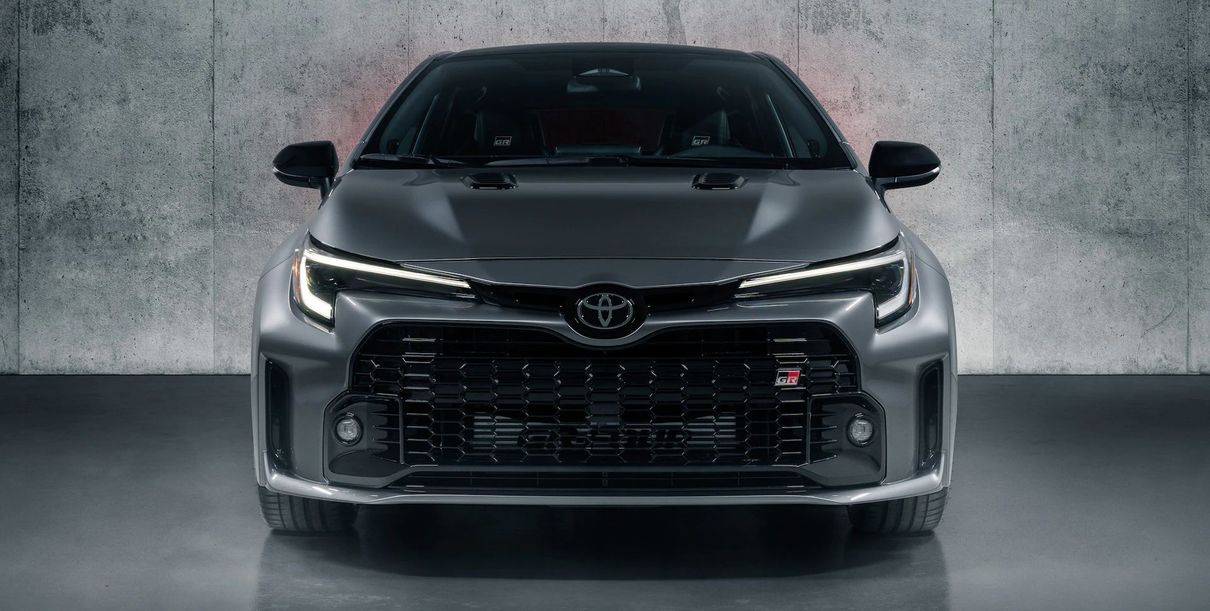2023 Toyota bZ4X. Toyota is set to re-enter the electric vehicle market with the 2023 bZ4X crossover, which features edgy styling that distinguishes it from Toyota‘s gasoline-powered SUVs. Toyota hybrids and plug-in hybrids are now household names in the automotive industry. Following several smaller-scale attempts at battery-electric vehicles, Toyota is now fully committing to EVs with the 2023 Toyota bZ4X AWD. Unlike the company’s previous all-electric vehicle, the RAV4 EV, the bZ4X is available at Toyota dealerships nationwide. The bZ has enough going for it to attract Toyota brand loyalists, with a unique design and an EPA-estimated 242-mile range. There are both front-wheel-drive and all-wheel-drive models available, with the former promising up to 252 miles of driving per charge. The bZ4X has joined a growing group of non-luxury EV SUVs, including the Chevrolet Bolt EUV, Ford Mustang Mach E, Hyundai Kona Electric, Kia Niro EV, Tesla Model Y, and Volkswagen ID.4, but its real-world highway range in our testing places it at the back of the pack. The bZ4X was developed in collaboration with the Subaru Solterra, and the two models are nearly identical, with the exception that the Subaru costs more and comes standard with all-wheel drive.
What does “bZ” mean in a Toyota bZ4X?
The “bZ” in the Toyota bZ4X stands for “Beyond Zero”. It highlights Toyota‘s commitment to zero-emission vehicles and much more. The automaker will likely produce many cars with the “bZ” acronym, similar to what Volkswagen does with its electric vehicle ID family.
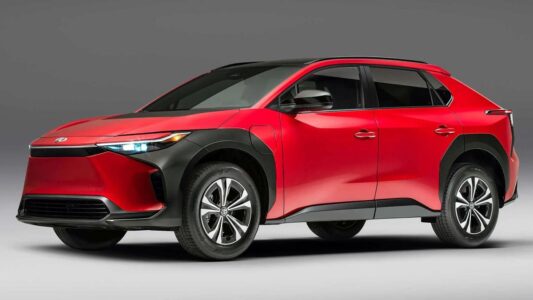
What Is New in 2023?
The 2023 Toyota bZ4X AWD will be a brand-new vehicle and nameplate for Toyota. It will be available in ZEV states first this spring, and then nationwide later in 2022.
The bZ4X is available in two trim levels: XLE and Limited, with either a single motor and front-wheel drive or dual motors and all-wheel drive. For either trim, upgrading to dual motors and all-wheel drive costs $2080. A panoramic glass roof is standard, as is adaptive cruise control, lane-departure warning, lane-keeping assist, blind-spot monitoring, rear cross-traffic alert, and Safe Exit Assist. A motion-activated power liftgate, a heated steering wheel, heated and ventilated front seats, a multi-view camera, 20-inch wheels, and Softex faux-leather upholstery are among the Limited’s additional features. The Limited’s extra features make it worthwhile to spend the extra money, but we’d stick with the standard front-wheel drive powertrain.
Electric Vehicle Motor, Power, and Performance
A front-wheel-drive, single-motor setup with 201 horsepower is standard, matching the output of the Kia Niro EV and the front-wheel-drive variant of the Volkswagen ID.4. The all-wheel-drive model has two motors, but power is only slightly higher, at 215 horsepower. This is significantly less than the all-wheel-drive ID.4 (295 horsepower) or the all-wheel-drive Hyundai Ioniq 5. (320 hp). During our initial test drive, we noticed quick acceleration in both the front-wheel drive and all-wheel drive models, but don’t expect to beat any Teslas in a drag race. The most powerful dual-motor version managed a 6.4-second run to 60 mph on our test track, which is respectable but not thrilling. The bZ4X’s ride is compliant over bumps without being overly soft, and the steering is weighted well. Although regenerative braking can be activated via a button on the center console, the bZ4X falls short of the true one-pedal driving found in other EVs.
Also Read: 2024 Toyota Prius Prime Full Review New
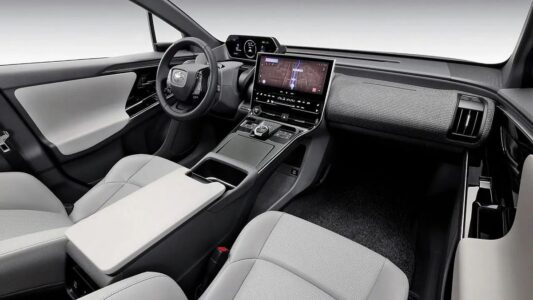
Battery Life, Range, and Charging
The batteries in the two bZ4X powertrains are nearly identical: a 63.4-kWh pack in the single-motor model and a 65.5-kWh pack in the dual-motor model. The EPA estimated range for the FWD, single-motor model is 242/252 miles (Limited/XLE), while the all-wheel-drive model is 222/228 miles. When we tested a dual motor model, we were disappointed with its highway range of 160 miles. If you mostly drive in the city, you may not notice the range pinch as much, but this result ties the Nissan Leaf for the lowest highway result among EVs. The 6.6-kW onboard charger can recharge the battery in 9 hours when powered by a Level 2 supply. Toyota claims that adding an 80 percent charge at a DC fast-charger takes just under an hour, with peak charging rates of 150 kW for front-drive models and 100 kW for all-wheel-drive models. In addition, buyers receive a year of free charging at EVgo locations.
Real-World MPGe and Fuel Economy
The bZ4X gets up to 131 MPGe in the city and 107 MPGe on the highway. Our dual-motor Limited test vehicle returned a disappointing 86 MPGe on our 75-mph highway fuel economy test route. Visit the EPA’s website for more information on the bZ4X’s fuel economy.
Cargo, Interior, and Comfort
The interior of the 2023 Toyota bZ4X AWD is spacious and airy, with a digital gauge display and a 12.3-inch central touchscreen. Wireless smartphone mirroring is standard, and navigation is free for the first three years, after which it requires a subscription. Although there is no glovebox, the wide center console between the two front seats has standard wireless smartphone charging and open storage underneath. A radiant heating element in the lower dash of the Limited is an optional feature that warms the legs of front-seat riders. There is no trunk, and the rear cargo hold has a capacity of 26 to 28 cubic feet (versus 38 for the RAV4).
Also Read: 2024 Toyota Venza Hybrid, Limited Full Review New
Connectivity and infotainment
A large 12.3-inch infotainment touchscreen with wireless Apple CarPlay and Android Auto capability, as well as a 7.0-inch digital gauge display, are standard on all bZ4X models. With cloud-based navigation, an on-board Wi-Fi hotspot, and wireless smartphone charging, the system is fairly well-connected. A six-speaker stereo with SiriusXM satellite radio is standard, but buyers on the Limited trim can upgrade to a nine-speaker JBL stereo system.
2023 Toyota bZ4X AWD
The era of early electric vehicle adoption is over. These days, average drivers—those who buy dozens of Toyotas like the RAV4 and Camry each year—need to be persuaded to go electric. The Toyota bZ4X 2023 was designed to be an electric crossover that would be instantly familiar to anyone transitioning from anodyne gas-powered mobility appliances. The 2023 Toyota bZ4X only needed to be mundane enough for Chris Commuter to switch to electric driving and overlook about it.
It’s a travesty in that regard because the bZ4X is one of Toyota‘s best-driving vehicles, endearing itself with outstanding refinement and performance. However, the difficulties of living with the bZ4X keep it on your mind. In any case, it’s an EV SUV you won’t forget.
2023 Toyota bZ4X AWD Enterprise
The first impression is made by the vehicle’s name—don’t capitalize the “b.” Similar alphanumeric jumbles will become prevalent in Toyota‘s Beyond Zero (bZ) electric subbrand’s products. The bZ4X is the first vehicle in a lineup that will eventually include battery-powered crossovers, sedans, trucks, vans, and even sports cars. The bZ4X and its identical twin, the Subaru Solterra, will be powered by a dedicated electric platform known as e-TNGA.
Until then, the 2023 Toyota bZ4X is similar in size to the RAV4 compact crossover. It’s 3.7 inches longer overall than the RAV4, with a 6.3-inch longer wheelbase, and it’s 2.0 inches shorter in height but only 0.2 inch wider. The bZ4X’s undercarriage, like the RAV4, is more than 8.0 inches above the ground, which Toyota claims adds adventure-readiness. The two have comparable passenger headroom and legroom measurements, though the bZ4X sacrifices cargo capacity for its fastback-like profile.
Among the Fastest Toyotas For Sale
The 2023 Toyota bZ4X is front-wheel drive and has a 71.4-kWh battery that powers a motor that produces 201 hp and 196 lb-ft of torque. It starts at $43,215 before EV tax incentives. This is a test of the available all-wheel-drive powertrain, which starts at $45,295 and includes front and rear motors powered by a 72.8-kWh battery pack for a total of 214 hp and 248 lb-ft.
The bZ4X’s unremarkable output belies its acceleration: 0-60 mph takes 5.8 seconds, matching sporty Toyota models such as the small, stick-shift GR86 and the V-6-equipped Camry TRD. Only the RAV4 Prime and Supra are faster in Toyota‘s lineup. However, dual-motor versions of the Hyundai Ioniq 5, Kia EV6, and Ford Mustang Mach-E all complete the sprint in less than 5.0 seconds. Nonetheless, the bZ4X delivers torque in a remarkably linear manner, pulling strongly both off the line and while in motion. Even though the bZ4X’s quarter-mile time of 14.5 seconds at 95.9 mph is slower than its direct competitors’ times of 13.0 seconds at 100 mph, our test team was impressed with how consistent its responses remained across a wide range of speeds.
In everyday driving, the dual-motor powertrain performs admirably. It’s enjoyably—even provocatively—faster than Toyota‘s wheezy naturally aspirated I-4, peaky V-6, and groaning hybrid engines. An audible but unobtrusive motor whine provides accelerating context. The motors are tuned in harmony to maintain balance when accelerating while turning the steering wheel.
Low boundaries, high comfort
Braking performance, on the other hand, is unimpressive. The 125-foot 60-0-mph stopping distance of the 2023 Toyota bZ4X trails that of the aforementioned Hyundai, Kia, and Ford. The difficult modulation of the pedal bothered our test drivers, who felt it shudder under ABS. The brakes aren’t EV-ideal in normal scenarios, either, because they’re so necessary. It is not possible to drive on one pedal; regenerative braking will slow the SUV, but stopping requires pressing the brake. According to Toyota, this familiar footwork was purposefully engineered into the car to keep the driver engaged. In our experience, however, this isn’t necessary because modulating an EV’s accelerator to completely decelerate keeps us focused on the task at hand. Not to mention that improved regen could extend the bZ4X’s range—more on that later.
The 2023 Toyota bZ4X cannot compete in terms of handling. It averaged 0.77 g as it rounded our skidpad and completed the figure-eight in 27.4 seconds at 0.62 g. Even in single-motor mode, the RWD Volkswagen ID4 sticks better, averaging 0.83 g on the skidpad and matching the Toyota on the figure-eight. But those figures don’t convey the bZ4X’s composed driving style. Its steering has a lovely weight to it, not too heavy to require undue effort but not too light to feel twitchy or vague. Because of the low center of gravity, body roll is minimal, and the bZ4X’s ride is notably comfortable, aided by the plush, supportive driver’s seat.
Don’t dismiss the bZ4X because of its unimpressive test results. It provides a relaxing, cohesive, and satisfying driving experience. When you add in Toyota‘s much-improved infotainment and driver assist features, any cross-town trip becomes genuinely enjoyable. The drives outside of town, however, call into question whether the bZ4X’s pleasant demeanor is worth it.
This is because of its battery capabilities. The single-motor powertrain in XLE trim has a maximum range of 252 miles. This dual-motor Limited test vehicle has a worst-case mileage of 222 miles. While those figures are broadly comparable to the Ioniq 5 and EV6, other EVs have a significant advantage when it comes to charging. The bZ4X has a maximum power output of 150 kW on single-motor models and only 100 kW on dual-motor models due to a different battery pack. Meanwhile, Hyundai and Kia are capable of 235 kW.
The bZ4X briefly reached a charge peak of 65 kW in one session with an Electrify America 150-kW DC charger, resulting in a 64-minute wait for the Toyota to charge from 5 to 80 percent. And that was in springtime in Southern California; charging will be even slower in colder or hotter weather. The range anxiety instilled as soon as the air conditioning is turned on further limits the bZ4X’s viability. We were wondering how sweaty was too sweaty to arrive at our destinations as we watched the range-estimate display drop by dozens of miles.
Parts of the interior are out of place for a vehicle that Toyota wants to be normal. Beyond the humongous hub of the steering wheel is a small digital gauge display that only taller members of our staff could see unobstructed—average-height drivers may find it blocked by the rim. Tiny volume control buttons are simply inconvenient. The drive-selector dial and fabric dashboard trim are stylish, high-touch details that contrast with the seemingly chintzy plastic door handles.
Beyond Zero
Toyota, perhaps more than any other automaker, understands how to produce straightforward, personality-free vehicles that last for a long time and never require a second thought. The Toyota bZ4X 2023 is not one of them. Yes, it could last forever, and its eight-year, 100,000-mile battery warranty adds to Toyota‘s reputation for dependability. But it’s how the bZ4X sticks with you that distinguishes it from its brand counterparts. Toyota failed spectacularly in making the bZ4X forgettable, whether you’re thinking about where to charge it next or how pleasant it is to drive. Indeed, it has the potential to convert today’s average motorists into future EV enthusiasts.
source http://wikipedia.com
 spirotours.com spirit of car news and automotive blog
spirotours.com spirit of car news and automotive blog
